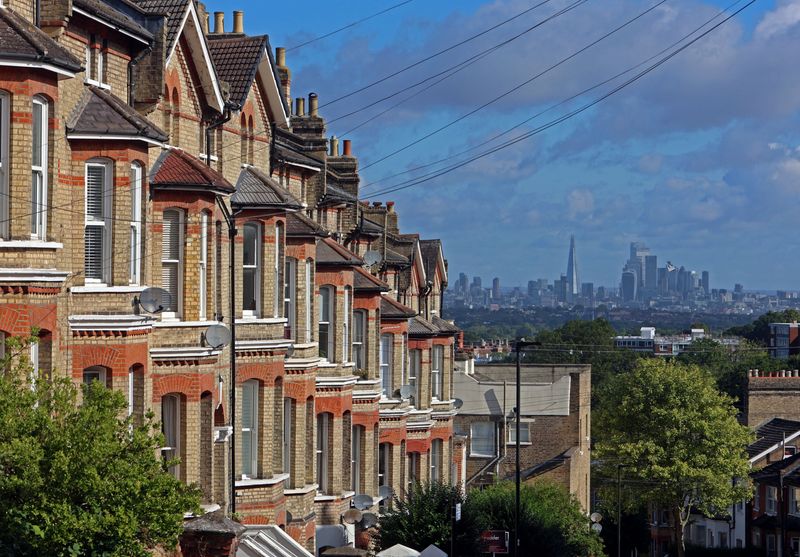By David Milliken
LONDON (Reuters) -British house prices rose this month more than economists had expected, adding to signs that the squeeze from high interest rates is beginning to ease, figures from mortgage lender Nationwide Building Society showed on Wednesday.
Nationwide said house prices in January increased by 0.7% from the month before after being flat in December, beating economists' forecast in a Reuters poll for a 0.1% rise.
"There have been some encouraging signs for potential buyers recently with mortgage rates continuing to trend down. This follows a shift in view amongst investors around the future path of Bank Rate," Nationwide chief economist Robert Gardner said.
Prices this month were 0.2% lower than a year earlier - the smallest annual decline since January 2023 - after forecasts for a 0.9% decline and a 1.8% fall in December.
Looking at the three months to the end of January, prices rose by 1.1%, their fastest since July 2022, which was shortly before rising Bank of England (BoE) interest rates and temporary bond market turmoil under Prime Minister Liz Truss hit the market.
The BoE is expected to keep its Bank Rate at 5.25% on Thursday, but may lower some of its inflation forecasts, which economists think will give it scope to start to cut interest rates from the middle of this year.
The BoE said on Tuesday that average mortgage rates fell in December for the first time since November 2021. The number of mortgages approved by lenders was the highest since June, but still about 25% below pre-pandemic levels.
"Nationwide's data add to evidence that mortgage rates already have fallen far enough to arrest the downturn in house prices," Samuel Tombs, chief UK economist at Pantheon Macroeconomics, said.

Britain's housing market - like those in many Western countries - boomed during the COVID-19 pandemic, boosted by record-low interest rates, temporary tax breaks and a greater demand for living space as people worked from home.
Official figures for November showed that British house prices had fallen 2% from their peak in September 2022, but were still 24% higher than before the pandemic.